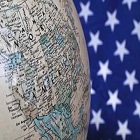"Textile and apparel manufacturing in the USA is enjoying resurgence. And making the most of this even companies based in India and China are investing in US facilities, says a recent Textiles Intelligence report. Reshoaring as its known may have been triggered partly due to concerns over factory safety and growing concerns over the safety of chemicals and a lack of traceability. Equally, retailers and brands are being taken to task over environmental sustainability."

Textile and apparel manufacturing in the USA is enjoying resurgence. And making the most of this even companies based in India and China are investing in US facilities, says a recent Textiles Intelligence report. Reshoaring as its known may have been triggered partly due to concerns over factory safety and growing concerns over the safety of chemicals and a lack of traceability. Equally, retailers and brands are being taken to task over environmental sustainability. All of these are easier to monitor and control in US factories than they are in far-off developing countries.
Competitive advantage
Similarly, developments in technology, notably automation and robotics are enabling US factories to cut costs while proximity to the market provides producers in the US with a significant competitive advantage over companies based in distant countries in terms of quick response and market knowledge.
Reshoring would appear to have the support of the public. Almost eight out of 10 US consumers say they would rather buy an American-made product than an imported one. And over 60 per cent of them would be willing to pay 10 per cent more for it.
The resurgence in manufacturing in the USA has been however, fairly modest and followed substantial losses between 2005 and 2008. Indeed, the US apparel industry still supplies less than 3 per cent of the US domestic market for apparel in volume terms. Also, US apparel imports continue to be dominated by low cost Asian suppliers, reflecting the fact that cost minimisation continues to play a vital role in sourcing decisions.
Desperate shortage of skilled operatives in the US is one of the biggest obstacles to reshoring. Moreover, there are not enough people who can do the training. Most of these people retired long ago without being replaced by younger entrants. There is also a lack of skilled technicians who are able to maintain sewing machinery.
Role of migrants
Meanwhile, migrants are playing an important role in the reshoring of textiles and clothing to fill the gap. In general, migrants have a younger age profile than that of the US population as a whole and, if motivated properly, they are likely to work harder and more energetically than their older counterparts. Besides, economic migrants are, by definition, motivated by the potential for increasing their standard of living and are therefore willing to put in the hours and effort required to achieve this. Above all, many migrants bring with them the sewing skills they acquired in their countries of origin, particularly those migrants who originate in Mexico or other Latin American countries.
However, the availability of migrants as a human resource is likely to be limited by public opinion. The subject of migration raises temperatures in most host countries, and there is evidence that the tide is very much against migration on a significant scale.













